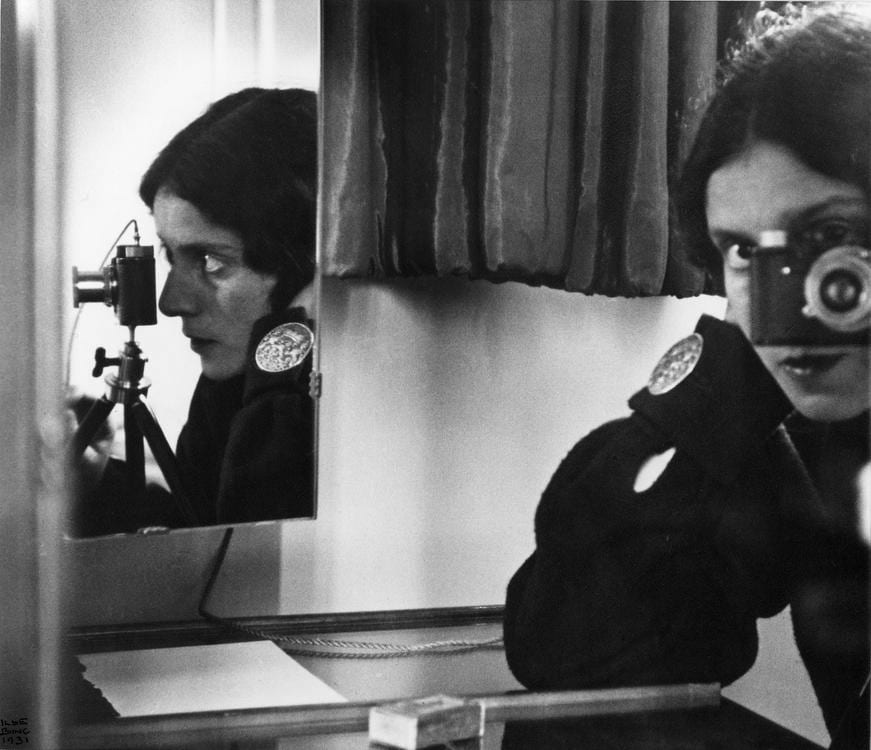Ilse Bing
Ilse Bing was born and raised in Frankfurt, Germany. She moved to Paris in 1930 and experienced her greatest achievements in photography while living in the City of Lights. There, she was immersed in the flourishing art world and experimentation of the period, surrounded by artists like Man Ray, Laszlo Moholy-Nagy, and Henri Cartier-Bresson.
Bing’s images of Paris were often “unconventional” along the same lines as Man Ray’s images. She used an experimental technique called “solarisation” of negatives, which reverses or alters the roles of dark and light tones. The effects of such techniques made for abstract images. Yet, Bing also frequently captured Paris in a more traditional, “straight-photography” style. She achieved success for her work early on. She was featured in the Louvre’s first contemporary art exhibition of 1936. Art critic Emmanuel Sougez, titled Bing, “Queen of the Leica.”
With the outbreak of World War II in Europe, Bing and her husband, Konrad Wolff, an orchestra conductor, endured a troubling time. They were separated for over a month when they were forced into different internment camps. Bing was able to rejoin her husband in Marseille, but the two knew they had to leave Europe. They were fortunate to receive visas with the help of the fashion editor at Harper’s Bazaar, a former employer of Bing.
After she moved to New York City, Bing continued photography through the 1940s. However, after the 1950’s, she took a long break from her craft and moved onto others like writing and drawing. She finally reignited her interest in photography in 1976, when she showed her work for the first time in 17 years at the Lee Witkin Gallery in New York. After her death in 1998, five major museums acquired the pictures in her estate.
Photography & Works
-

Ilse Bing
Baronne Van Zuylen Add to cart -

Ilse Bing
Chairs, Paris, Champs Elysses Add to cart -

Ilse Bing
Hot Dog Vendor, NYC Add to cart -

Ilse Bing
Last Bastille Day Before the War Add to cart -

Ilse Bing
Orchestra Pit, Theatre des Champs Elysees Add to cart -

Ilse Bing
Paris, 1934 Add to cart -

Ilse Bing
Patrice Avec Bateau Add to cart -

Ilse Bing
Pont des Arts, Paris Add to cart -

Ilse Bing
Rond Point de Champs Elysees, Paris Add to cart -

Ilse Bing
Stormy Sky Add to cart -

Ilse Bing
Street Scene From Above Add to cart



